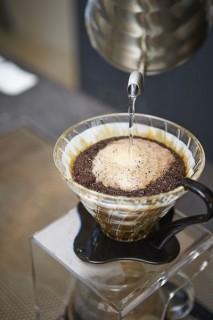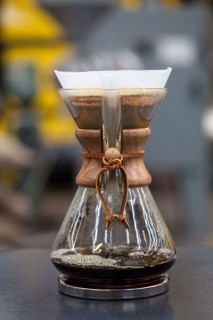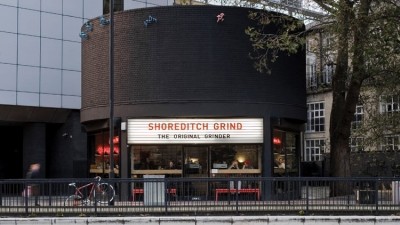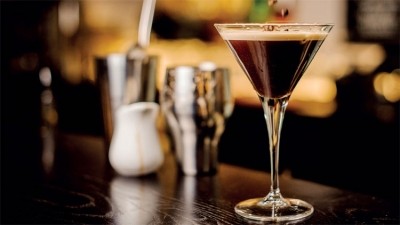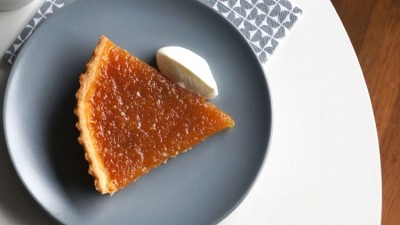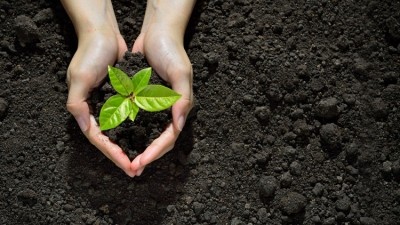#yesfilter: why the case for filter coffee is growing stronger
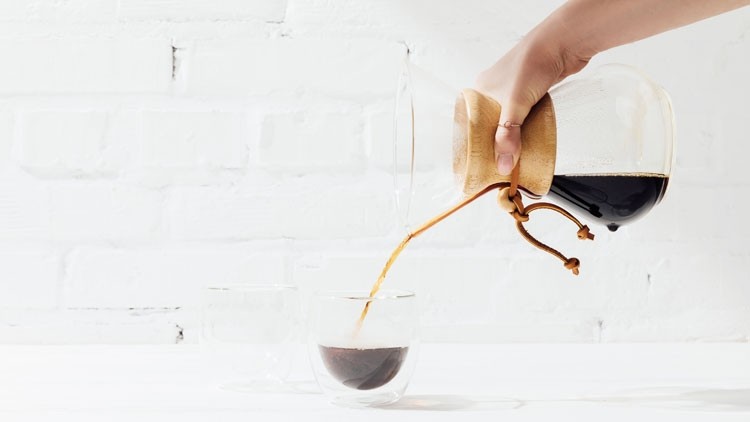
The after-dinner coffee is, if nothing else, a tradition. Knocking back a short, dark shot of espresso – orange-speckled crema, a thrill of bitterness, maybe some sugar – is the exclamation point to a good meal, whether it follows a quick and dirty pizza or a thirteen-course omakase.
As ‘food’ and ‘culture’ reconcile their differences and restaurants and all that comes with them evolve in step with global tastes and influences, both the mainstream and vanguard of British food culture are more mindful of global inflections, new ways of eating.
The same is true of coffee culture, though at many restaurants you wouldn’t know it. In wider metropolitan café culture, cafés, roasters and drinkers are beginning to enjoy coffees roasted and brewed to reflect terroir and flavour. Coffees that vary according to seasonality, coffees whose taste is affected by place and process, delivering subtleties in the cup that taste of fruits and flowers, served black, as a filter, with milk if you would like it.
But in restaurants, the espresso machine reigns supreme, pods and capsules the supporting cast. This is partly due to the way that coffee is perceived in the UK, especially when compared with the places that weigh so heavy on our attitudes to food: Denmark, Norway, Italy, Japan. As Rob Dunne, owner of Aside restaurant in Peckham, London, says: “Bottom line is simply down to volumes. Firstly, not everyone cares about coffee and how it’s made, only that it is facilitated.” The fact is that how coffee appears is more important than how it gets there, or why it is served.
Choosing partners
That’s not to say that restaurants aren’t making changes behind the scenes: Wahaca recently partnered with Cornwall’s Origin Coffee Roasters to source and serve a bespoke coffee from Mexico, while Claridge’s Hotel in London has a partnership with Workshop Coffee, based in Bethnal Green.
Having this roaster support is invaluable, in some ways: the chance to have a coffee roasted for you and only you can be a valuable point of difference for those who are interested in coffee. On the flipside, a reputable roaster partnering with restaurants at scale can be taking risks: if the coffee is not prepared according to spec, it can reflect as badly on the coffee company as the restaurant.
There’s also the range of drinks to consider: offering many different coffees and coffee drinks might seem hospitable, but it also creates more scope for things to go wrong. Good restaurants focus on doing simple things well in food, wine and service. It seems strange to leave this behind when it comes to coffee.
It’s also a matter of knowledge. Coffee, so long perceived as purely functional, is not an altogether obvious site of revelatory flavour experiences. Stevie Parle, the restaurateur behind Palatino, Rotorino, Pastaio and CRAFT in London, has a roastery at the latter, which is an all-day enterprise as well as a restaurant.
When choosing coffee beans to buy green (before roasting) Parle favours coffee from single estates over blends. “It’s unusual for espresso. But we want a coffee that will be good with milk but also great short and black,” he says. “We don’t roast it as light as some of the hip roasteries as I’m kind of looking for a crowd pleaser, so don’t want to go too heavy on the fruity coffees suited to a light roast and filter brew.”
Dunne also owns a roastery – Old Spike – and it’s clear that having this facility available while running at least one site as an all-day space allows a flexibility unavailable for most restaurants. It works economically too, with a lower cost per kilo on raw product leaving room for experimentation with small, unconventional lots or single bags.
It also circumvents one of the toughest elements of setting up a good, consistent coffee offering: training. Victoria Roberts of Le Cochon Aveugle in York can’t emphasise this enough. “Using an espresso machine and being able to texture milk is only good if done properly,” she says. “It’s a huge amount of training, and we couldn’t have a barista in just doing coffee”.
Opting for pods
Serving good coffee quickly means investing in a hire with barista skills and/or training staff. Add this financial outlay on top of the cost of a high-end espresso machine, grinder, coffee, milk, decaf coffee and barista kit and it’s no wonder many restaurants opt for pods – one coffee, prepared consistently, with easy set-up and the chance to vary what is served if so desired. But some would say this idiot-proof way of preparing coffee is lacking in taste.
So what about going filter only? The first thing to consider is equipment. The biggest outlay for a filter set-up will most likely be the grinder. For a restaurant operating at high volume, or a restaurant that wants to put coffee front and centre of their offer, an Mahlkonig EK43 is the
coffee-industry standard. It costs, however, around £1,700 and is often subject to a waiting list.
If working at smaller volumes, a high-quality domestic grinder can come in at around £400 to £600 and do a very solid job. Then there’s the brewer. Roberts’ choice is the Chemex, an art-deco inspired glass brewer designed in the United States. “We decided that we preferred the style of coffee from a Chemex, we like to make the coffee at the table,” he says. “We don’t want to do the final thing away from the table and we want the customer to be involved in the whole process as well — it’s part of the philosophy of the restaurant. If you have to wait hours for the bill to come it leaves a bad taste, we treat the coffee as another course. It’s an extension of the menu.”
The Chemex also acts as both a brewer and a vessel, meaning less service ware and clutter when the coffee is poured; its large volume means coffee can be made for a whole table all at once without compromising on theatre. Other options include the popular V60, which can still do 500ml of coffee at a time.
A gooseneck kettle — with a thin, elongated spout — is essential for precise pouring of the water over the ground coffee, and scales can be used to make the entire process repeatable and precise. This is easy to teach, and with the support of a roaster offering consistent beans, it’s easy to serve something delicious and considered with low effort. If working at scale, there’s the much-maligned batch brewer: if correctly programmed and cleaned, it produces coffee at volume and speed that will easily match a hand-poured brew. Parle considered this for his newest restaurant, Pastaio: “We would have gone for filter/batch brew only but as it’s Italian that doesn’t quite work somehow.”
Pushing filter
Larger coffee companies are increasingly pushing filter to restaurants despite the fact its low-tech nature has the potential to drastically reduce spend on equipment capex, hire and maintenance.
“Filter coffee really can be the ultimate on-site win-win – profitable, consistent, quick and, most importantly, delicious,” says UCC head of coffee excellence Gareth Davies. “A good barista will put time, effort and skill into every cup of espresso-based coffee they make. If that same attention to detail is put into filter coffee, the results can be fantastic. It can be as simple as making sure everything is dialled in right to begin with – be it the grind, the weight, the temperature – to guarantee every fresh batch of filter coffee is consistent.
“Just because the ‘effort’ isn’t happening at the time an order is taken doesn’t mean it’s not happening at all; the effort and skill simply comes earlier.”
Black filter is a marker of a specific, antipodean/nordic coffee culture that is mostly confined to large cities and a certain kind of restaurant in the UK. It would be unreasonable — and a little bit culturally insensitive — to think that restaurants with their own rich coffee cultures, traditions and ceremonies should immediately shift to filter orthodoxy.
Roberts echoes the importance of serving a coffee appropriate to the rest of the restaurant experience: “If you care about provenance and sourcing you should care about that across the board, you should be able to trace things back — making sure things come from places where farmers are properly looked after. The whole process is important.”
Dunne advises operators to choose their coffee prep method in a way that works for their venue. “You cannot and should not try to be a café. Always custom set up to your needs.” If your needs are good coffee with minimal training and the chance to give customers a revelatory experience, maybe it’s time to go filter only.
This feature first appeared in the June 2018 issue of Restaurant magazine, the leading title for the UK's restaurant industry. For more features, comment, interviews and in-depth analysis of the sector subscribe to Restaurant magazine here.
